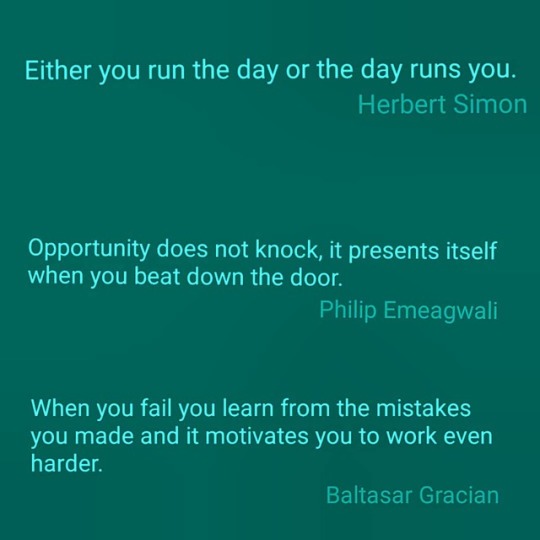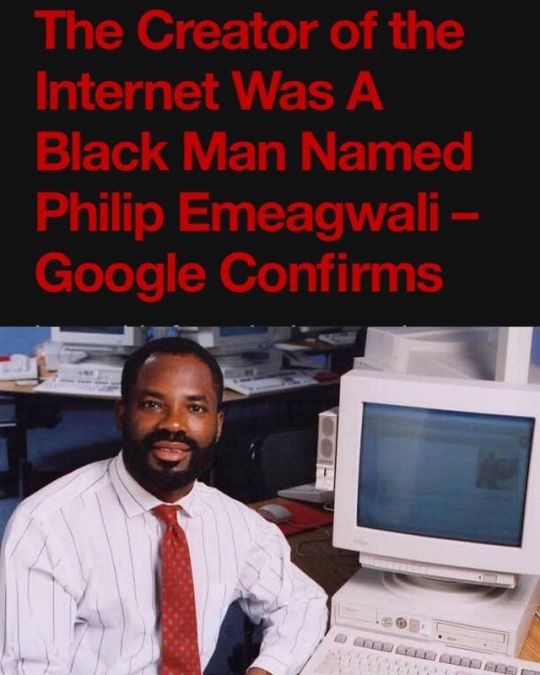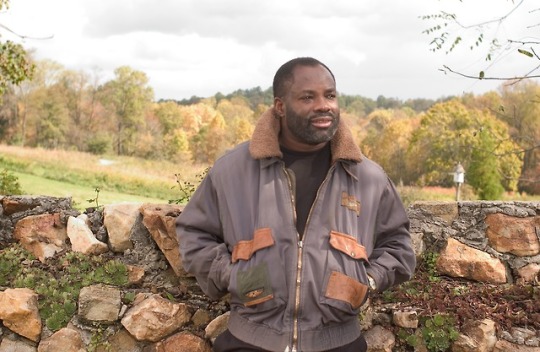#PhilipEmeagwali
Explore tagged Tumblr posts
Text

Fifty Years, A Million Dreams: My Life as a Nigerian American
Let me take you back to a pivotal moment in my journey: March 20, 1974. Picture a teenage Nigerian, standing with a mix of hope and anxiety outside the Embassy of the United States of America in Lagos. That teenager was me, about to face a visa interview that could change the course of my life.
I remember the small talk with about 20 other visa interviewees, the nervous energy in the air, and the warning from one of them: "You'll be back ten times before you get a visa." But inside me, there was a flicker of hope, a belief that today might just be my day.
The interview itself was brief—just five minutes and five questions. What stood out were not the questions themselves but the items I presented: an academic scholarship to Oregon backed by correspondence test scores from Britain and the United States, reflecting my journey as a self-taught and independent student. My education was unconventional, a testament to the resilience and resourcefulness that each of you possess in abundance.
When the interviewer, Mr. Glasl, examined my documents and finally said, "Congratulations," I was overwhelmed. His American accent made it hard to understand his words, but the meaning was clear when I walked out holding a colored card—a symbol that my F-1 student visa would be stamped. The disbelief in the eyes of the other interviewees was a mirror of my own.
As I left the embassy, holding that precious card, I felt a whirlwind of emotions. Confusion, excitement, and a sense of achievement. I remember thinking, "What next?" It felt like I had been chasing a dream, much like a dog chasing a pickup truck, and suddenly, I was on board, wondering what to do.
I got into a taxi, and in pidgin English, the driver asked, "Were you dey go?" In that moment of uncertainty, I blurted out "Tinubu Square," a place symbolic of our nation's heart and history. It was a moment of transition, from dreams to reality, from aspirations to achievements.
My journey from that day led me to make contributions to computer science. But more importantly, it taught me that no matter where you come from, no matter the odds stacked against you, your dreams are valid, and your potential is limitless.
So, to each one of you, I say: dream big, work hard, and never give up. Your journey might be filled with challenges, but remember, it is these challenges that forge the strongest steel. You are the future of this great nation, and I do not doubt that you will rise to shape a world that is brighter, better, and more beautiful than we can even imagine.
Thank you.
Philip Emeagwali
0 notes
Video
The Hidden Geniuses Who Changed Your World: Discover Their Shocking Secr... The Hidden Geniuses Who Changed Your World: Discover Their Shocking Secrets #blackhistorymonth #HiddenGeniuses, #WorldChangers, #ShockingSecrets, #UnsungHeroes, #InventorsRevealed, #ScienceLegends, #TechPioneers, #OvercomeAdversity, #InspireInnovation, #GladysWest, #AlexanderMiles, #BenjaminBradley, #HenryBlair, #AliceBall, #GranvilleTWoods, #BenjaminBanneker, #MaryKenner, #BessieBlount, #MarieBrown, #JohnStandard, #SarahBoone, #PhilipEmeagwali, #TrailblazingInnovators
0 notes
Photo

So NOW that they SHADOW BAN an ACCT for using HASH TAGS ... the SYSTEM now can tell that I ain’t been using their method & wants me to ENGAGE in it AGAIN... LISSEN @instagram THIS IS NOT A GAME PEOPLE & BUSINESSES are DYING because of your reverse psychology & LEGAL CON ARTISTIC ways in manipulating our OWN SUCCESSES to ultimately MAKE US PAY YOU in the LONG TERM to “MARKET” to our “EARNED” INTANGIBLE AUDIENCE. The ability to CREATE an algorithm that REFLECTS such perverse systematic software engineering is the BIGGEST SCAMMING legal SYSTEM. Freedom of SELF expression and PRESS should NOT stop with advancement in and of our technology. WHATEVER is PROCREATED in this NATION should have the ability to exercise their bill of rights! If I’m NOT mistaken... the CELL PHONE was CREATED by a BLACK MAN #HenryTSampson who’s HASH tag is FEWER than 100 but i got 1K+ let’s not leave out #PhilipEmeagwali who CREATED THE INTERNET... STOP CREATING counter productive MACHINERY to DISCREDIT, DISSOLUTE, DEMINISH, EXCLUDE & DAMN RIGHT ERASE our KNOWLEDGE. You blatantly ATTACK Accts who’s “WOKE” to your schemes and baby, I DON’T need to BE COLLEGED EDUCATED to know that.. I mean. HELL Mr Phillip was a DROP OUT tbh... STOP PLAYING games with US because we are SMARTER than any MACHINE this is FACT because WE MADE IT DUMMY’s. Sorry y’all ... if you read this through I LOVE YOU for BEING I tuned... HOWS that for a phuken Hash TAG 🏷 BOOM 💥 https://www.instagram.com/p/B1h9_QpBcVO/?igshid=1lw8fy1ytjp57
1 note
·
View note
Photo

Love these three affirmations by American economist Herbert Simon, Nigerian computer scientist Philip Emeagwali and Spanish Jesuit and philosopher Baltasar Gracian. Three great ways to reflect on your upcoming day and to hit it head on. I'm posting it now since it'll be close to noon when I get up. 🤣 #Affirmations #HerbertSimon #PhilipEmeagwali #BaltasarGracian #OpportunityKnocks #KnockDownTheDoor #RunTheDay #Hardwork #HardWorkPaysOff #RollingUpYourSleeves #GettingYourHandsDirty #LeadByExample #Motivation #Success #Failure #Resilience #SiscoVanilla #SiscoVanillaIsStepping #SiscoVanillaHitsTheBricks https://www.instagram.com/p/B3i9rlMFdEC/?igshid=iq1r283bo8nz
#affirmations#herbertsimon#philipemeagwali#baltasargracian#opportunityknocks#knockdownthedoor#runtheday#hardwork#hardworkpaysoff#rollingupyoursleeves#gettingyourhandsdirty#leadbyexample#motivation#success#failure#resilience#siscovanilla#siscovanillaisstepping#siscovanillahitsthebricks
0 notes
Photo

Put some respect on #PhilipEmeagwali “Philip Emeagwali, a computer scientist, is but one example. He uses his mathematical and computer expertise to develop methods for extracting more petroleum from oil fields. It was his formula that used 65,000 separate computer processors to perform 3.1 billion calculations per second in 1989. That feat led to computer scientists comprehending the capabilities of supercomputers and the practical applications of creating a system that allowed multiple computers to communicate. He is recognized as one of the fathers of the Internet. Supercomputers range in price from $30 million to $100 million, and computer companies had reservations about building them for fear few agencies would make such pricey purchases. “At that time, the argument was, ‘We shouldn’t build computers that way because who can program them?’ ” said Emeagwali, who is also a civil engineer. “I answered that question by successfully programming them.” Future applications for Emeagwali’s breakthroughs with the use of data generated by massively parallel computers include weather forecasting and the study of global warming. CNN Another article about Philip Emeagwali It’s hard to say who invented the Internet. There were many mathematicians and scientists who contributed to its development; computers were sending signals to each other as early as the 1950s. But the Web owes much of its existence to Philip Emeagwali, a math whiz who came up with the formula for allowing a large number of computers to communicate at once. Emeagwali was born to a poor family in Akure, Nigeria, in 1954. Despite his brain for math, he had to drop out of school because his family, who had become war refugees, could no longer afford to send him. As a young man, he earned a general education certificate from the University of London and later degrees from George Washington University and the University of Maryland, as well as a doctoral fellowship from the University of Michigan. At Michigan, he participated in the scientific community’s debate on how to simulate the detection of oil reservoirs using a supercomputer. Growing up in an oil-rich nation and understanding...” https://www.instagram.com/p/Byjcme6gkEQ/?igshid=1lyodutmg1yg3
0 notes
Video
instagram
Dr. Philip Emeagwali is a Nigerian-American computer scientist. He won the 1989 Gordon Bell Prize for price-performance in high-performance computing applications, in an oil reservoir modeling calculation using a novel mathematical formulation and implementation. Dr. Emeagwali is sometimes credited with inventing the world’s first supercomputer. Capable of performing 3.1 billion calculations per second, Philip’s work is often associated with the advent of the Internet as we know it. However, there has been some discourse as to his actual contributions to computer and network development over the years. Lauded as telecommunications entrepreneur and pioneer, Emmit McHenry founded Netcom Solutions. But black inventors also gave us technological building blocks and devices we still use today. #drphilipemeagwali #philipemeagwali #blackinventors #blackhistorymonth #egyptlawson #explore https://www.instagram.com/p/B8MvWtPJf4V/?igshid=zsgg3963iidy
0 notes
Photo

#ifyoudontknownowyouknow #dontbelieveme #research #researcheverything #learnrealhistory #keepyourselfeducated #blackhistorymonth #365 #readmore #learn #more #changetheglobe #philipemeagwali #rbg
#readmore#changetheglobe#blackhistorymonth#365#more#keepyourselfeducated#researcheverything#ifyoudontknownowyouknow#dontbelieveme#research#philipemeagwali#learnrealhistory#rbg#learn
0 notes
Quote
The history of civilization is the history of technology.
Philip Emeagwali
0 notes
Video
youtube
For complete transcript and lecture series, visit http://emeagwali.com. For live speaking engagements or tour schedules, call 202-203-8724 or email [email protected] or http://emeagwali.com. LECTURE TRANSCRIPT: I’m Philip Emeagwali. I’m a research supercomputer and internet scientist. My scientific story is more fragmented than the story of the theoretical physicist Albert Einstein. It was the story of my journey to the frontier of extreme-scale computational physics. That journey to discover how to solve the toughest problems in mathematical physics was interrupted during the last thirty months of the 1960s. That journey was interrupted when I fled from my all-boys Catholic boarding school—named Saint George’s Grammar School, Obinomba (Nigeria). I fled from Saint George’s Grammar School in late April 1967 and I fled because the Nigerian Civil War was in the air. I fled to become a 12-year-old refugee in the break-away and short-lived nation of Biafra. Two months after I fled from Obinomba (Nigeria) to Agbor (Nigeria) to Onitsha (Biafra), and on the Sixth of July of 1967 that Nigeria-Biafra War began. On the Fourth of October of 1967, my ancestral hometown of Onitsha (Biafra) was heavily bombarded for 24 hours and bombarded from Asaba (Nigeria) and bombarded from across the River Niger. The following day, that artillery bombardment of Onitsha (Biafra) by the Nigerian army was followed by the invasion of my hometown. That night, Onitsha was invaded by a 10-boat armada that carried five thousand [5,000] Nigerian soldiers. Those Nigerian soldiers were led by Murtala Mohammed, who would later become the president of Nigeria. One in fifteen Biafrans died when that Nigerian Civil War ended. The Nigerian Civil War was a nightmare and a bloodbath. The Nigerian Civil War ended after thirty months of non-stop fighting and on January 15, 1970. One million soldiers died at the war fronts of the Nigerian Civil War. And about half a million women and children died in Biafran refugee camps. I survived two years in Biafran refugee camps and survived six months of bloodbath near the Oguta War Front. I survived a war that was described as Africa’s bloodiest war. 14.1.2 One Day We Had to Run! Biafra was located in the southeastern region of Nigeria, West Africa. My family of seven children lived in six refugee camps within Biafra. For two years and three months, onward of April 1967, my family lived in refugee camps in the Biafran cities of Onitsha, Ogidi, Oba, Awka, Awka-Etiti, and Ndoni. During the months of January, February, and March of 1968, Russian Ilyushin bombers and Mig fighters were bombing and strafing our neighborhoods of around 14 Mba Road, Onitsha. On my 14th birthdate of August 23, 1968, my postal address was: Chukwurah Philip Emeagwali Saint Joseph’s Refugee Camp, Awka-Etiti, Biafra, West Africa. On the cover of the TIME magazine that was dated August 23, 1968 is an artist’s portrait of “Colonel Ojukwu,” the leader of Biafra. The cover story of that issue of TIME magazine was titled “Biafra’s Agony.” For us, the agony was real. Half of the refugees at our Saint Joseph’s Refugee Camp, Awka-Etiti, Biafra, were living skeletons. My father, Nnaemeka James Emeagwali, was the live-in refugee camp nurse at Saint Joseph’s Refugee Camp. In August 1968, my father told me that half of the children in our refugee camp, including my two-year-old brother, Peter, had kwashiorkor, a rare malnutrition disease caused by lack of protein. At Saint Joseph’s Refugee Camp of Awka-Etiti (Biafra), children and grandparents that did not survive kwashiorkor were buried without funerals and buried at our backyard. In Biafra, meat, pepper, and even salt were almost as scarce as gold. Three charity organizations —The Red Cross, the Roman Catholic relief organization, named Caritas, and the World Council of Churches—provided to our refugee camp cornmeal, Norwegian dried stock fish named “okporoko,” and powdered milk. The relief foods were secretly flown into Uli airstrip of Biafra. That 27-month refugee experience was the reason the United Nations has the portrait of Philip Emeagwali —along with the portraits of the likes of Albert Einstein— in its Gallery of Refugees Who Made a Difference. Philip Emeagwali Lecture 180125-2
0 notes
Quote
I arrived at the terra incognita of supercomputer knowledge and arrived holding a small lantern that was dimly lit. I arrived at that unknown world by forging a path never taken before. I arrived from a narrow footpath that was never taken before.
Philip Emeagwali
0 notes
Quote
The inventor is a prisoner of his invention and somewhat need an outsider to fully explain his invention to him.
Philip Emeagwali
0 notes
Video
youtube
For complete transcript and lecture series, visit http://emeagwali.com. For live speaking engagements or tour schedules, call 202-203-8724 or email [email protected] or http://emeagwali.com. TRANSCRIPT: My Contributions to Mathematical Physics - Lecture 180128 The nine partial differential equations of modern calculus —called Emeagwali’s equations— began as the Second Law of Motion of physics. I encoded that Second Law of Motion into eighty-one (81) partial derivative terms of Emeagwali’s system of equations that governs the multiphase flow of oil, water, and natural gas that was flowing a mile-deep and across a production oilfield, such as the Oloibiri Oilfield of Nigeria that was the first oilfield discovered in West Africa and discovered in 1956. As a research computational mathematician, I insisted that the petroleum reservoir simulator must obey the laws of physics at all times and simulations. My contributions to mathematical knowledge include the mathematical discovery that the system of nine coupled, non-linear, and time-dependent partial differential equations in the calculus textbooks of the petroleum industry were not equating to the reality within the oilfield the partial differential equations represent. For that reason, I invented the nine Emeagwali’s equations that contained thirty-six [36] partial derivative terms that equated with the four physical forces that exists within all production oilfields. Along those lines, I also had to invent nine finite difference algebraic algorithms that were not constrained by in inverted commas “dependency” and constrained when executing across my new internet that was outlined by an ensemble of 65,536 commodity-off-the-shelf processors that were identical to each other and that were equal distances afar and apart from each other. A necessary condition to making my experimental discovery of the Fourth of July of 1989 was that I simultaneously send email messages to all 65,536 processors on my new internet and that I synchronously receive my email replies from all 65,536 processors. That massively parallel processing supercomputer invention took a narrative identity all its own, namely, I—the storyteller—became the story and the subject of school reports. 7.1.2 My Contributions to Algebra Nine in ten supercomputer cycles are executed while solving extreme-scaled systems of equations of algebra. On the Fourth of July of 1989, the US Independence Day, I experimentally discovered how to finesse my 64 binary thousand identical and commodity processors to email each other and to work together to reduce the time-to-solution of extreme-scale systems of equations of algebra and to reduce that time-to-solution from 65,536 days, or 180 years, on one processor to just one day across an ensemble of 65,536 processors. I experimentally discovered how to compute quickly and accurately and how to make the impossible-to-solve systems of equations of extreme-scale algebra possible-to-solve and how to use that new knowledge of massively parallel processing extreme-scaled problems in algebra and doing so to build digital replicas of petroleum reservoirs and the Earth’s climate. I experimentally discovered a new supercomputer that encircled a globe and encircled it in the manner the internet encircled a globe and that could be used to solve never-before-solved problems in algebra. That new supercomputer is a new instrument that enables the computational mathematician and physicist to answer previously unanswerable questions in the extreme-scale algebra that is the recurring decimal in their grand challenge problems. By definition, algebra is the generalization of arithmetic. In high school algebra, two letters represent two numbers. In the supercomputer algebra that arises from trying to discover and recover otherwise undiscoverable and unrecoverable oil and gas, one trillion letters must represent one trillion numbers arising from a system of one trillion equations of algebra. Those one trillion equations are evenly distributed across millions of processors that, in turn, solves the trillion equations in parallel, or solves them by computing one million calculations at once. In modern supercomputing, parallel processing is the disruptive technology that displaced sequential processing, a technology that established itself for half a century. Between sequential processing that was experimentally invented in 1946, and parallel processing that I experimentally invented in 1989, was vector processing that was the sustaining technology that yielded incremental gains in the supercomputer speeds of the 1970s and ‘80s. My world’s fastest supercomputer algebraic calculations made the news headlines and entered into the June 20, 1990 issue of the Wall Street Journal.
0 notes
Quote
As a 19-year-old supercomputer programmer, I felt like a small boy that was in charge of a big ocean liner that turns slowly.
Philip Emeagwali
0 notes
Photo

Philip Emeagwali 23rd August 1954. A Nigerian-American pioneer of the modern supercomputer best known as a father of the internet.
0 notes
Quote
A breakthrough technology is a sacred object.
Philip Emeagwali
0 notes
Video
youtube
For complete transcript and lecture series, visit http://emeagwali.com. For live speaking engagements or tour schedules, call 202-203-8724 or email [email protected] or http://emeagwali.com. LECTURE TRANSCRIPT: I’m Philip Emeagwali. I’m a research supercomputer and internet scientist. My scientific story is more fragmented than the story of the theoretical physicist Albert Einstein. It was the story of my journey to the frontier of extreme-scale computational physics. That journey to discover how to solve the toughest problems in mathematical physics was interrupted during the last thirty months of the 1960s. That journey was interrupted when I fled from my all-boys Catholic boarding school—named Saint George’s Grammar School, Obinomba (Nigeria). I fled from Saint George’s Grammar School in late April 1967 and I fled because the Nigerian Civil War was in the air. I fled to become a 12-year-old refugee in the break-away and short-lived nation of Biafra. Two months after I fled from Obinomba (Nigeria) to Agbor (Nigeria) to Onitsha (Biafra), and on the Sixth of July of 1967 that Nigeria-Biafra War began. On the Fourth of October of 1967, my ancestral hometown of Onitsha (Biafra) was heavily bombarded for 24 hours and bombarded from Asaba (Nigeria) and bombarded from across the River Niger. The following day, that artillery bombardment of Onitsha (Biafra) by the Nigerian army was followed by the invasion of my hometown. That night, Onitsha was invaded by a 10-boat armada that carried five thousand [5,000] Nigerian soldiers. Those Nigerian soldiers were led by Murtala Mohammed, who would later become the president of Nigeria. One in fifteen Biafrans died when that Nigerian Civil War ended. The Nigerian Civil War was a nightmare and a bloodbath. The Nigerian Civil War ended after thirty months of non-stop fighting and on January 15, 1970. One million soldiers died at the war fronts of the Nigerian Civil War. And about half a million women and children died in Biafran refugee camps. I survived two years in Biafran refugee camps and survived six months of bloodbath near the Oguta War Front. I survived a war that was described as Africa’s bloodiest war. 14.1.2 One Day We Had to Run! Biafra was located in the southeastern region of Nigeria, West Africa. My family of seven children lived in six refugee camps within Biafra. For two years and three months, onward of April 1967, my family lived in refugee camps in the Biafran cities of Onitsha, Ogidi, Oba, Awka, Awka-Etiti, and Ndoni. During the months of January, February, and March of 1968, Russian Ilyushin bombers and Mig fighters were bombing and strafing our neighborhoods of around 14 Mba Road, Onitsha. On my 14th birthdate of August 23, 1968, my postal address was: Chukwurah Philip Emeagwali Saint Joseph’s Refugee Camp, Awka-Etiti, Biafra, West Africa. On the cover of the TIME magazine that was dated August 23, 1968 is an artist’s portrait of “Colonel Ojukwu,” the leader of Biafra. The cover story of that issue of TIME magazine was titled “Biafra’s Agony.” For us, the agony was real. Half of the refugees at our Saint Joseph’s Refugee Camp, Awka-Etiti, Biafra, were living skeletons. My father, Nnaemeka James Emeagwali, was the live-in refugee camp nurse at Saint Joseph’s Refugee Camp. In August 1968, my father told me that half of the children in our refugee camp, including my two-year-old brother, Peter, had kwashiorkor, a rare malnutrition disease caused by lack of protein. At Saint Joseph’s Refugee Camp of Awka-Etiti (Biafra), children and grandparents that did not survive kwashiorkor were buried without funerals and buried at our backyard. In Biafra, meat, pepper, and even salt were almost as scarce as gold. Three charity organizations —The Red Cross, the Roman Catholic relief organization, named Caritas, and the World Council of Churches—provided to our refugee camp cornmeal, Norwegian dried stock fish named “okporoko,” and powdered milk. The relief foods were secretly flown into Uli airstrip of Biafra. That 27-month refugee experience was the reason the United Nations has the portrait of Philip Emeagwali —along with the portraits of the likes of Albert Einstein— in its Gallery of Refugees Who Made a Difference. Philip Emeagwali Lecture 180125-2
0 notes